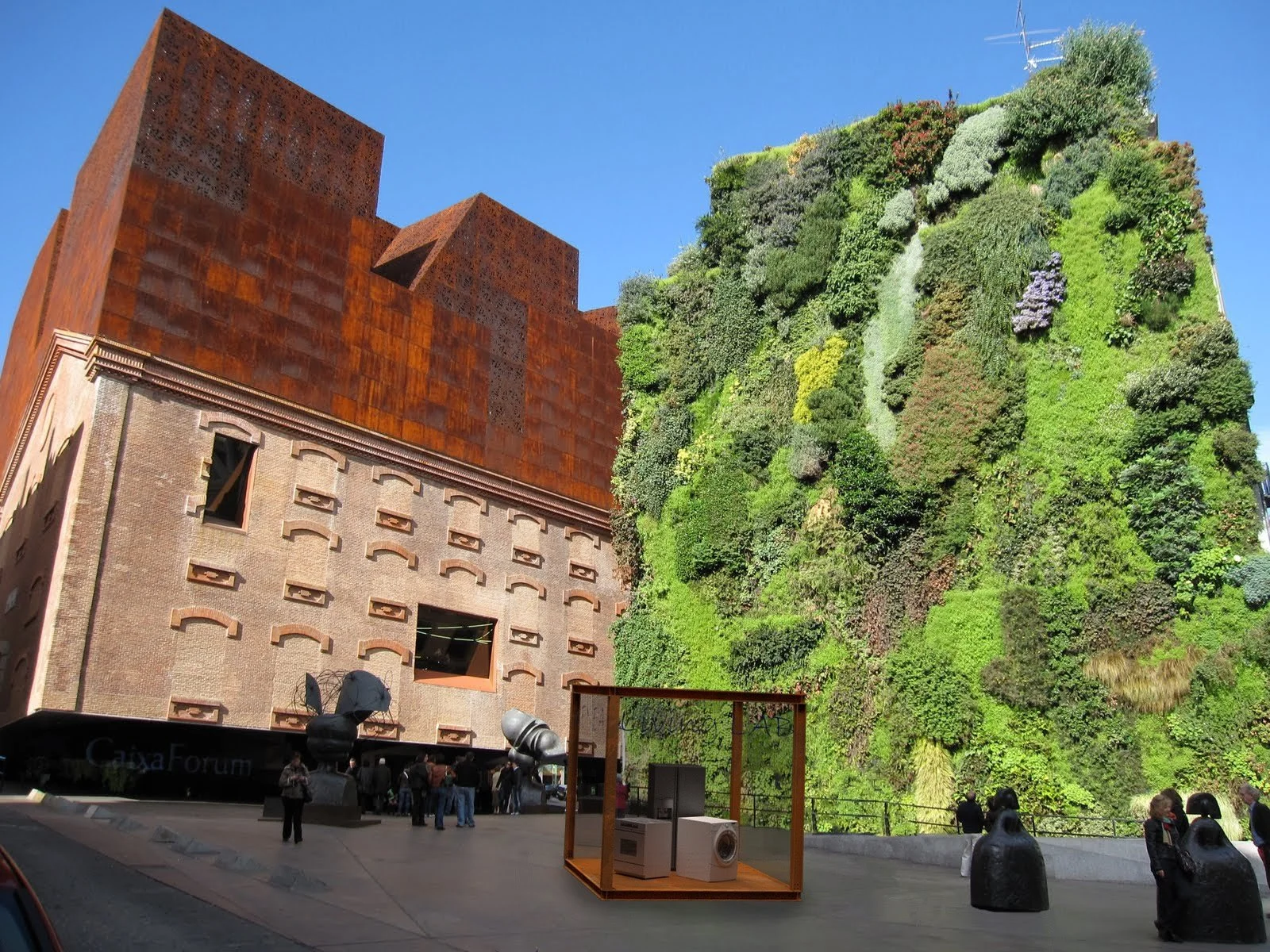Living walls are a beautiful addition to any space and can be found all around the world. They have become popular with architects, designers and decorating enthusiasts for the enormous potential it offers in terms of interior or exterior spaces. Green walls offer numerous health and wellness benefits, from stunning aesthetics to environmental sustainability.
Below we've listed our picks of the best living walls from around the globe. You might be inspired by them to create your own!
The Claustro de Sor Juana University, Mexico City
Photo: u_elclaustro/Instagram
The Vertical Garden of the Universidad del Claustro de Sor Juana was designed and installed on 21 November 2012 by the Mexican company Verde Vertical.
It has 280 m² of green areas and a total of 400 m² in its entire extension. It is also made up of 6,745 plants of 40 different species and 120 m² of grass. The garden brings the city ever closer to the figure recommended by the World Health Organisation (WHO) of 9 m² of green area per inhabitant.
The vertical garden has a unique feature, a bicycle and a tricycle hanging over the green wall. The idea has served as a backdrop for beautiful photographs and has given a touch of originality to the structure.
This vertical garden will generate oxygen for 285 people, reduce at least 10 decibels of noise pollution, trap more than 38,000 grams of dust, and filter out 200,000 tonnes of harmful CO2 gases per year.
Moreover, it provides the city and its inhabitants with a space of natural beauty. There you can enjoy the amazing design of the garden, the scent of the plants and the freshness of the clean air. This creates a healthy atmosphere and motivates the community to take new eco-urban initiatives.
Changi Airport's Terminal 3 in Singapore
Photo: Tierra Design
The green walls at Changi Airport's Terminal 3 in Singapore are absolutely amazing. It's enough to make you want to fly!
Designed by Tierra Designs, the green façade at the Singapore Changi airport terminal 3 is huge and beautiful at 4,144 square meters. It consists of more than 10,000 plants and 25 species of climbers creating a warm and welcoming environment. Each plant is grown on a stainless steel cable which is attached to the infrastructure system and can be removed if needed.
CaixaForum Museum in Madrid, Spain
Situated in the heart of Madrid’s cultural district, this beautiful vertical garden was designed and created by Patrick Blanc using his Le Mur Végétal system. It was the first vertical garden to be installed in Spain and it has the largest continuous surface area in the world.
The vertical garden at CaixaForum Madrid is a point of union with nature and the city. Around 15,000 native and foreign plants of 250 different species were planted on the façade of the 24-metre-high building of the CaixaForum Museum.
Rubens Hotel in London
Back in Europe, this time in London, to admire the masterpiece that decorates the façade of the Rubens Hotel. It is an outdoor green wall that covers 350 m² and is 21 metres high, making it the largest vertical garden in the capital. This unique and innovative structure absorbs as much as 10,000 litres of rainwater each year in special tanks. This water is then redistributed to the plants during dry periods.
Kö-Bogen II office block in Düsseldorf, Germany
Photographe : ©ingenhoven architects / HGEsch
In Düsseldorf, Germany, this urban transformation is particularly spectacular. During the renovation of a retail and office building in the city centre, the architectural firm Ingenhoven designed the largest green façade in Europe. 30,000 plants (hornbeam hedges and grass) make up a spectacular 41,400 m² plant wall. These eight kilometres of hornbeam hedges (which retain their leaves in winter) are equivalent to about 80 mature trees with deciduous leaves.
"Greenery improves the city's microclimate: it protects from the sun's rays in summer and reduces urban heat, binds carbon dioxide, stores moisture, attenuates noise and promotes biodiversity," explains the agency.
The GardenHouse, Beverly Hills, California
Photographe : ©Nic Lehoux
With the Gardenhouse residential project, MAD fuses the stereotype form of the house with tropical vegetation that takes us to the other side of the world.
Located at 8600 Wilshire Boulevard, in the Beverly Hills district of Los Angeles, the Gardenhouse complex consists of 18 interlinked residences that seem to grow towards the sky. Completed in 2020, this modern architectural building is covered by the largest living wall in the United States at 6,700 square feet, with 28 species and over 40,000 plants.
The result is a physical manifestation of the idea that architecture can be connected to the built and natural environment, to offer a more balanced and harmonious living experience.
Max Juvenal Bridge, Aix En Provence, France
Photographe : Chamelle Photography
A green wall can provide as many benefits as green roofs in terms of urban cooling and energy efficiency. Botanist Patrick Blanc's 2008 artwork on the Max-Juvénal Bridge in Aix-en-Provence illustrates the environmental benefits of green walls, such as reducing urban heat islands and contributing to cleaner air through oxygen production and CO2 reduction through photosynthesis.
This green wall covers more than 650 m2 and is 15 m high - 30 to 35 plants per m2 were installed, which represents a total of 20,000 plants.
One Central Park, Sydney, Australia
One Central Park, Vertical Gardens by Patrick Blanc, Photographer Simon Wood
Called "One Central Park", this real estate and commercial complex Located in the heart of Sydney, a few kilometres south of the famous Opera House has the particularity of being covered by a huge green wall. Designed by botanist Patrick Blanc, the symbiotic and revolutionary living walls are based on his hydroponic system. They are spread over two buildings, one more than 100 metres high, the other 60 metres... If you add the two towers together, this makes the space the largest vertical garden on the planet. 250 different species of plants, and over 1,000 m2 of vegetation in total...































